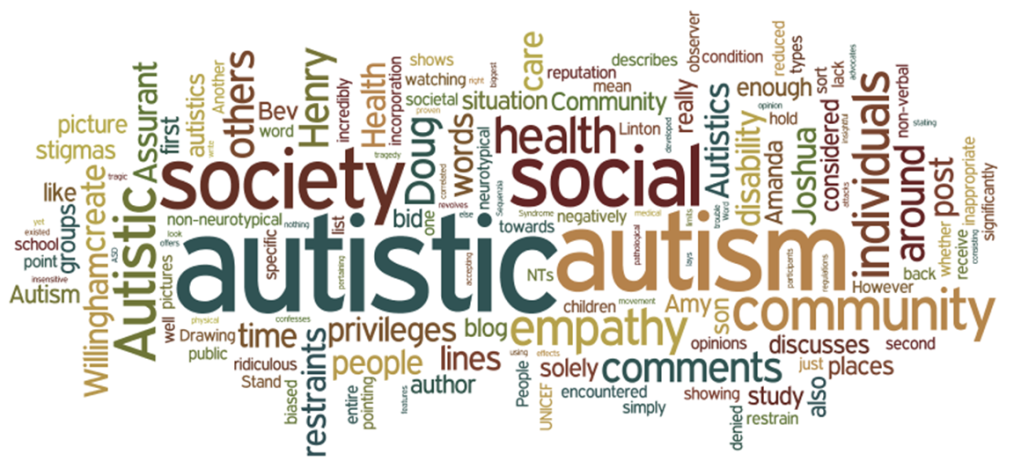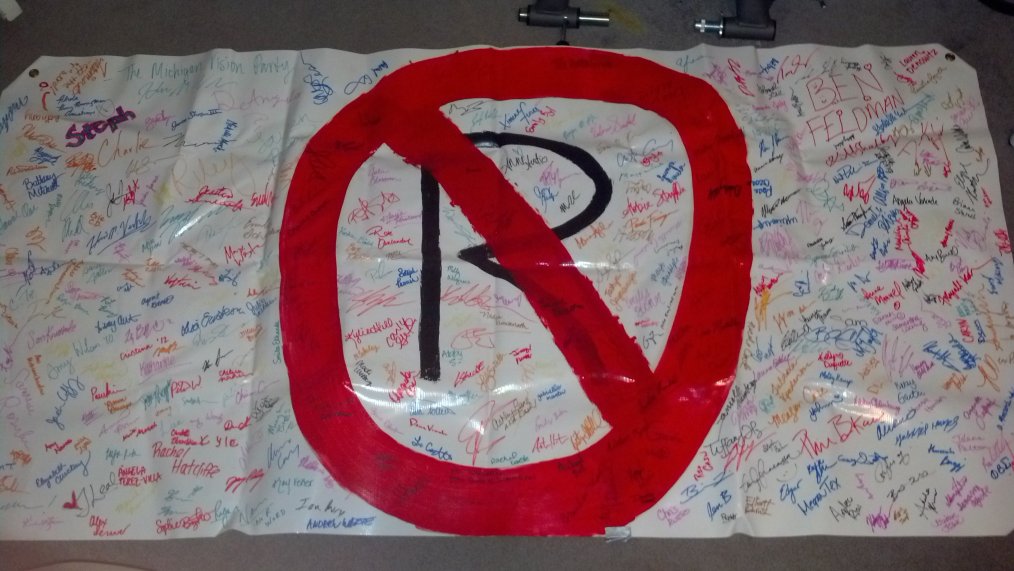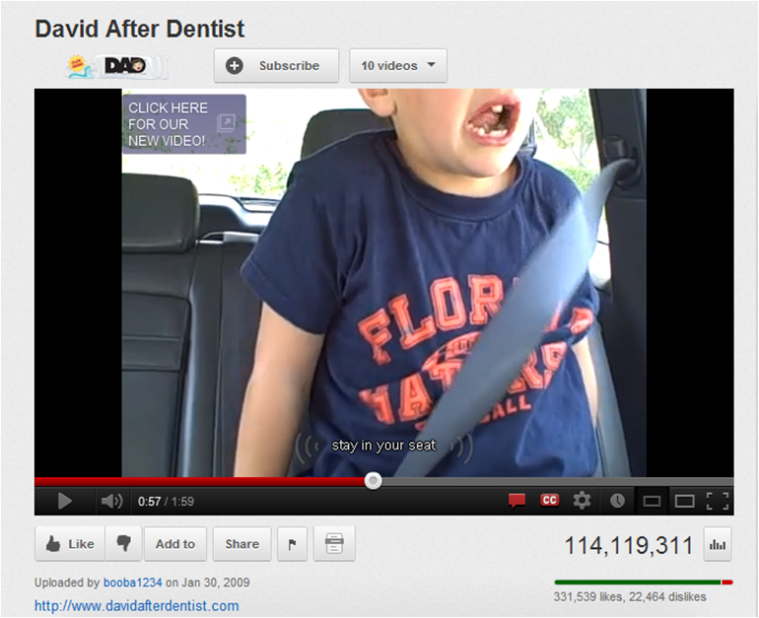Many undesirable restraints in society are placed over individuals with autism based on false stigmas of the autistic community which lead to false accusations, inappropriate medicilization, unnecessary exclusion, and overall unfair treatment.
Breathtaking to Behold: Talking back to Dismissal; By Amanda
Amanda discusses how minority groups hold key answers to the stereotypical nonsense questions that are thrown around to offend and oppress. However, the author confesses she thinks that the autistic community has not yet developed to this level, where they have quick responses to inappropriate comments such as “you’re not really autistic enough.”
Just as Siebers discusses in his essay about the incorporation of disability studies into the realm of culture wars, Amanda fights for a time when individuals with autism have their own snappy comebacks to the ridiculing comments they receive from their community. These comments not only restrain and demoralize people with autism, creating inappropriate social assumptions about who they are, but are also incredibly insulting to those receiving the comments.
Are you Autistic?; By Bev
Bev’s blog post consists of two pictures, the first titled “You are not really autistic because…” with a pie graph consisting of excuses such as “you write a blog,” “Asperger Syndrome doesn’t count,” or the biggest part being “you have the wrong opinions.” The second picture is a skewed Venn diagram showing “People who are REALLY autistic,” according to autism advocates, pointing out the ridiculous curriculum society places over being autistic.
These pictures hold a more literal confrontation with my topic, because they depict the specific restraints society has placed on individuals with autism. The first picture is showing the ridiculous reasons why some autistics are considered “not autistic” by autistic advocators, which not only insults them personally, but excludes them from their social cohort. The second picture pokes fun at the outrageous, un-written criteria one must fit to be considered autistic, and shows again how society is putting restraints on who is and who is not autistic, as well as what they are able to do.
Assurant Health Denies Coverage Because Young Man is Autistic; By Doug Boude
Doug confides in his audience about the trouble he encountered trying to find health care for his entire family, and how Assurant Health immediately denied coverage over his non-verbal autistic son Joshua, despite the fact that there is no correlation between autism and physical health.
A more concrete example of the effects of societal stigmas over autistics, Doug’s situation with Assurant Health is sadly not an uncommon one. While his son is a non-verbal autistic, this label does nothing in defining who Joshua is, what he is capable of, or the extent of his medical health. The moderator on the phone doesn’t even take the time to ask Doug about Joshua and his disability, rather he just states Assurant Health does not cover autistic children, and asks Doug about his other children. These types of restraints, such as being denied health care, deter those with autism from integrating fully into the community.
In the Autism Community, We’re Fond of Drawing Lines; By Emily Willingham
Emily blogs about the lines which members of the autistic community draw when it comes to societal abuse. The author lays out specific comments or actions where enough becomes enough, and also provides her list of “lines” to advocate for a more accepting community, such as “Remember that disability does not mean ‘no ability’ and that different does not mean less.”
These lines which Emily describes in her blog post, both hers and the common lines she encounters, are often overstepped by people every day. They symbolize and recreate the social stigmas which not only restrain those with autism in society, but also categorize them into disabled groups by medicalizing the condition. This in turn “casts human variation as deviance from the norm, as pathological condition, as deficit, and, significantly, as an individual burden and personal tragedy” (Linton, 11). The lines create separation between those with and those without autism, and limits those with it through society.
Neurotypical Privilege: A Working Document; By Bev
A list of privileges received solely for being neurotypical, which satirically attacks the ridiculousness of some social norms pertaining to autistic and non-neurotypical individuals.
In a sort of reverse way, Bev is pointing out the privileges which do not come with being non-neurotypical, such as having autism. While some of these are synonymous with other posts in which society offends and groups together negatively those with autism as incapable and incompetent, other privileges point out the benefits neurotypical people receive, such as availability of health care. Together, this lack of privileges negatively medicalizes autism and places restraints on their incorporation into society, solely based on these social stigmas and not at all on their actual abilities and characteristics.
Why “Autistics” Isn’t a Bad Word; By Emily Willingham
Another insightful post from Emily, this time she talks about the social stigma of the word “autistics,” and it’s the reason behind its acceptance while words like “retard” are considered offensive.
Drawing again on the medicalization Linton discusses in his book, Emily expresses how society has medicalized Autism “to the point that autistic people can read and hear words used to describe them that include ‘tragic,’ ‘stolen’ ‘monster,’ and ‘afflicted.’” This obviously places a negative connotation to those with the disability, but they have fought back. By attaching themselves to the word and using it as a representation in a positive light, the community aims to de-medicalize the term Autistics. To create a sort of individualization as Autistics, “who have strengths and weaknesses like everyone else and a right both for their voices and words to be heard…and to choose those words themselves” (Willingham).
Autistic People: Insensitive to social reputation, sure, but what about empathy?; By Emily Willingham
Another post by Emily (Sorry, I love her writing!), revolving around a scientific study conducted claiming that individuals with autism are insensitive to social stipulations, and therefore are unable to feel empathy. However, the author’s biased views from society create a conclusion incredibly disreputable.
First off, the entire experiment has so many holes that I’m baffled as to how it was published. In summary, 10 “high-functioning” Autistics and 11 NT individuals bid on charity items for UNICEF, first in seclusion and later with random people watching. The NTs bid significantly more when others were around to judge their “charitable status,” supposedly displaying the importance of their social reputation. Those with Autism, however, showed no difference and bid the same whether others were watching or not. The researchers claims that this neglect towards an observer stems from a lack of empathy for others, stating “it has been well established that ASD features reduced empathy.” Personally, that’s a bunch of bull shit. The study simply shows that the autistic participants simply donated what they felt was an appropriate sum, whether an observer was present or not. It was the NTs who correlated their monetary amounts to what others thought of them, not their empathy towards others (UNICEF). Most importantly, the researcher was biased on his opinions of individuals with autism, going into the study assuming they have reduced feelings of empathy because that is what society has taught him. This caused him to specifically look for such a trend, when really none existed, and in the end he looks like a fool.
I Stand With Henry; By Amy Sequenzia
Amy offers her opinion on the “I Stand with Henry” movement, which revolves around a young boy, Henry, whose admittance into public school has been rejected, solely because he is Autistic. The author describes the barriers to education she herself had to overcome, and is appalled that the situation hasn’t gotten any better.
Similar to the health care situation Doug encountered with his son Joshua, the public school system is refusing to allow Henry to integrate himself into the community, just because he is Autistic. Henry has proven himself through other schoolwork and knows he has what it takes to succeed. He even points out that, in school, he learned the Civil Rights Act of 1964 granted equal rights to all people, and he is a person, so why shouldn’t he get equal rights to public school? As Amy points out in her discussion, these types of regulations have been around for a significant amount of time, and only create another social restraint on the Autistic Community.

(Above is a word cloud, highlighting the most common and important words used throughout my blog carnival. The larger the word, the more often it appears throughout my writing. Big and bold in the center of the word cloud are the words autistic, autism, society, and social, which all pertain to the theme of this blog carnival – about the social restraints and accusations placed on individuals with autism. Other words which stand out include individuals, empathy, privileges, and stigmas.)


